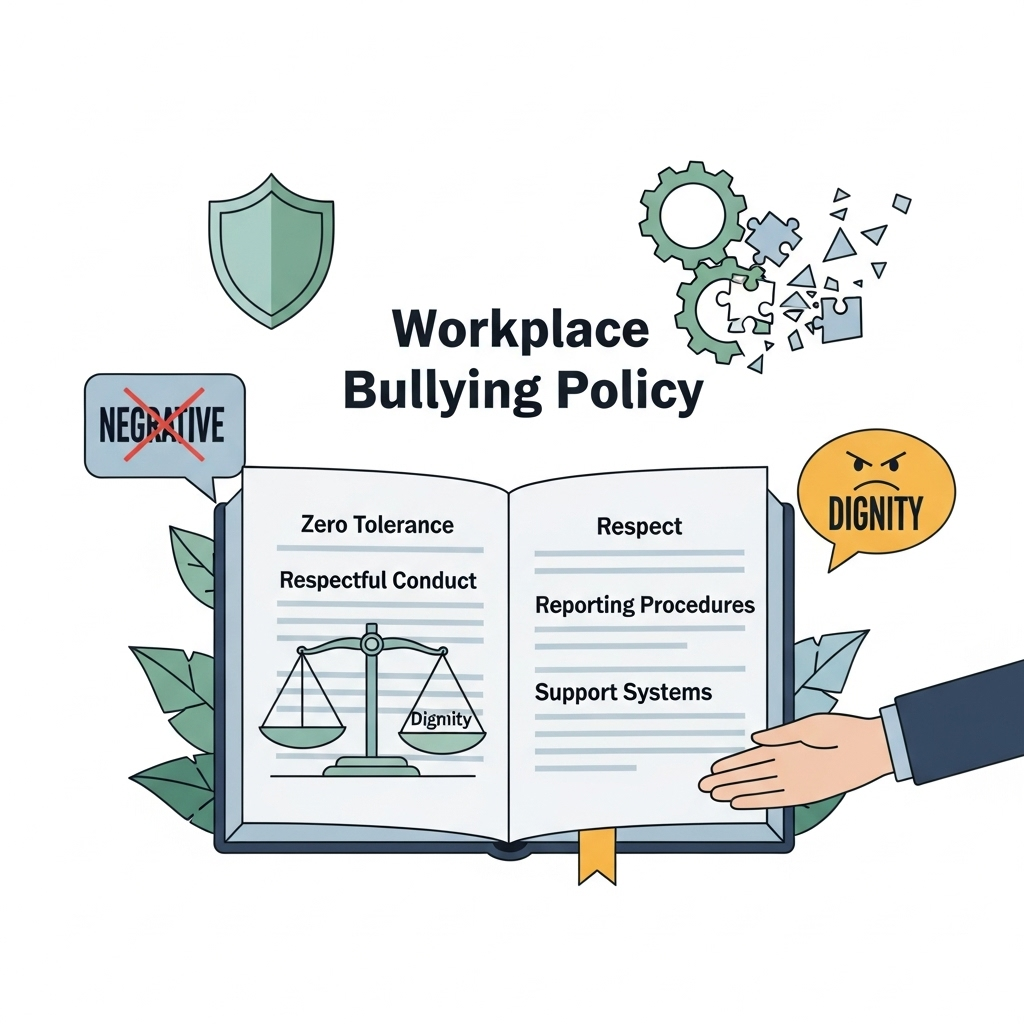Definition
A Workplace Bullying Policy is a formal guideline designed to prevent and address bullying behavior in the workplace. It aims to foster a safe, respectful environment where every employee can thrive without fear of harassment or intimidation. Essentially, it lays down the law on what constitutes bullying, how to report it, and what steps will be taken to resolve issues, ensuring everyone knows their rights and responsibilities.
Key Components
This policy is more than just a document; it’s a crucial part of your organization’s culture. Here are the main elements that make it effective:
- Definition of Bullying: Clearly articulate what constitutes workplace bullying. This includes behaviors like verbal abuse, intimidation, exclusion, and even malicious gossip. For instance, if someone repeatedly undermines a colleague’s work in meetings, that’s a clear violation of the policy.
- Reporting Procedures: Provide straightforward steps for employees to report bullying. Whether it’s to a supervisor, HR, or a designated contact, make sure employees know how to voice their concerns. Consider an anonymous reporting option to encourage more people to come forward.
- Investigation Process: Outline how complaints will be investigated. Assure employees that all reports will be taken seriously and investigated fairly. For example, if an employee reports bullying, HR should promptly gather information from all involved parties while maintaining confidentiality.
- Consequences: Specify the repercussions for those found guilty of bullying behavior. This could range from warnings to termination, depending on the severity of the actions. Make it clear that retaliation against anyone who reports bullying is strictly prohibited.
- Support Resources: Highlight the support available for employees who experience bullying, such as counseling services or employee assistance programs (EAPs). This shows your commitment to their well-being.
Importance in the Workplace
Why does a Workplace Bullying Policy matter? The impact of bullying can be profound, leading to decreased morale, increased absenteeism, and even high turnover rates. For example, imagine a team member who is consistently belittled in meetings. Not only could this affect their performance, but it might also create a toxic environment that drives others away. By having a robust policy in place, you send a clear message: bullying will not be tolerated, and everyone deserves to work in a supportive environment.
Best Practices
Implementing a Workplace Bullying Policy can be straightforward if you follow these best practices:
- Conduct Regular Training: Educate employees about what constitutes bullying and the importance of the policy. Host workshops or seminars to foster understanding and encourage dialogue.
- Maintain Open Communication: Encourage employees to speak up about any concerns related to bullying. Create an open-door policy where they feel safe discussing issues without fear of repercussions.
- Monitor the Workplace Atmosphere: Keep an eye on team dynamics and be proactive in addressing any signs of bullying. Regular check-ins can help gauge employee sentiment and uncover issues before they escalate.
- Lead by Example: Management should model respectful behavior and adherence to the policy. If leaders demonstrate a commitment to a bully-free workplace, employees are more likely to follow suit.
- Review and Revise the Policy: Periodically review your bullying policy to ensure that it remains relevant and effective. Gather feedback from employees to see if there are areas for improvement.
Legal Considerations
Understanding the legal implications of workplace bullying is essential. While there are no specific laws that define workplace bullying per se, many forms of bullying can violate employment laws related to harassment, discrimination, and workplace safety. For example, if bullying behavior targets an employee based on their race, gender, or disability, it could constitute a violation of equal employment opportunity laws. Having a clear policy helps you not only to protect your employees but also to safeguard your organization against potential legal issues.
Conclusion
In summary, a Workplace Bullying Policy is an indispensable part of creating a healthy and thriving workplace. By clearly defining bullying, outlining reporting procedures, and committing to thorough investigations, you can cultivate a culture of respect and support. Remember, a proactive approach not only protects your employees but also enhances overall morale and productivity. Together, let’s work towards a safe and inclusive environment where everyone feels valued and respected.




